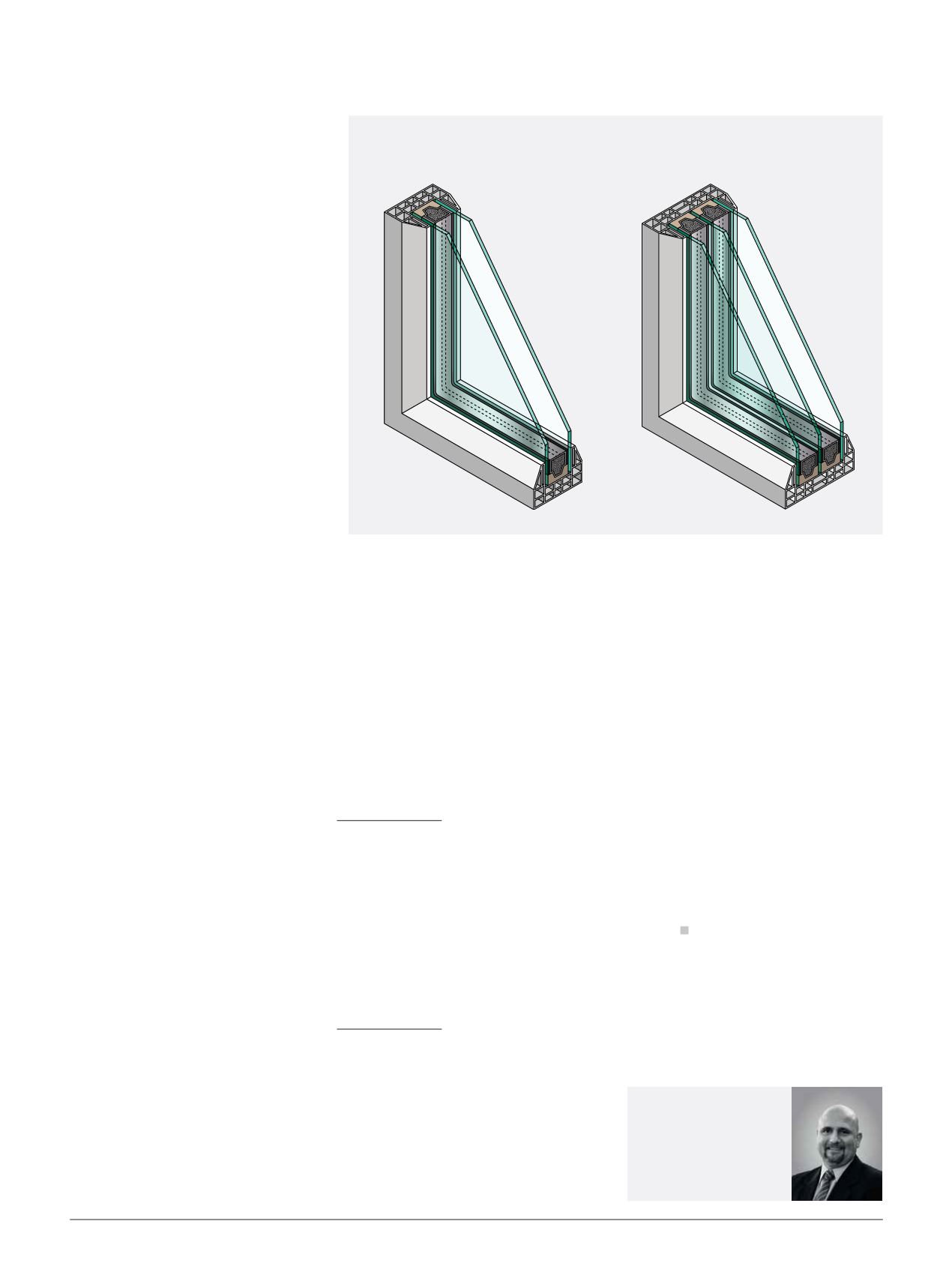
 www.buildingconnection.com.au
www.buildingconnection.com.au
3 9
addition of a special thin metal coating
on one side of the glass. Low-E glass
increases the energy efficiency of
windows by reducing the transfer of
heat or cold through the glass (around
a 30% reduction in the amount of heat
conducted compared to ordinary glass).
This means that in winter, a house stays
warmer, and in summer, it stays cooler.
There are two types of Low-E glass
available; hard coat (pyrolytic) and soft
coat (sputtered). Hard Coat Low-E glass
is quite hard, very durable, and can be
exposed to air and cleaned without
damaging the coating. Hard coat Low-E
glass is typically designed to reflect
heat back into a room.
Soft Coat Low-E glass is not
sufficiently durable to be used in single
glazed applications. However, when the
coated surface is positioned facing the
air space of a sealed insulated glass
unit, the coating will last as long as the
sealed glass unit.
Even though soft coat Low-E has
only been readily available over the last
couple of years, it is now a common
product in the Australian market. Soft
coat Low-E glass generally performs
better than hard coat Low-E glass – by
reducing the transfer of heat through
the glass – creating significantly better
performing and more comfortable
buildings.
However, the most comprehensive
solution is found by
combining a Low-E
coating with an
Insulated Glass Unit
(IGU).
An IGU consists of
two or more panes of
glass separated by
a spacer and sealed
to prevent humid
outside air from
entering the unit. To
prevent condensation
forming, the spacers
are typically filled
with or contain a desiccant to remove
moisture trapped in the gas space
during manufacturing.
Double glazing (two panes of glass) is
the most common form of IGU and can
reduce heat loss (or gain) by more than
50% in comparison to single glazing,
although visible light transmittance and
solar heat gain for a double-glazed unit
with clear glass will remain relatively
high.
Adding a Low-E coating to a surface
of a double-glazed unit will increase the
energy performance as will adding a gas
fill between the layers of glass.
Low-E glass is not better than double
glazing. Double glazing provides better
performance for windows and can be
used in conjunction
with Low-E glass
to achieve greater
performance results.
Low-E glass may
result in a more cost
effective option in
warmer climates,
if used with a tint.
However, using Low-E
glass within an IGU
also has the added
benefit of sealing the
coating within the
unit. This protects
the Low-E coating from scratches and
harsh chemicals, allowing for a longer
life.
Choosing the right frame and glazing
option will lower the U-value of a
window system. The lower the value, the
better the overall window performance
(U-value is the rate of energy transfer
through a material). Heat always flows
through a material from warm to cold
areas. The higher the U-value, the
greater the energy transfer or heat loss
through a window system.
Any time you invest energy (and
cost) into changing the air temperature
inside a home (through heating or
cooling), it’s worth considering steps to
avoid it becoming uncomfortable and
keeping it comfortable for as long as
possible. Energy efficient windows and
high performance glazing are uniquely
powerful in giving us this control. These
systems will help maintain year-round
comfort in a home, reduce power bills
and make a home safer and more
secure.
To find out more about high
performance windows and glass, visit
https://www.awa.org.au/and www.wers.
net
AN IGU CROSS-SECTION
Choosing the right
frame and glazing
option will lower
the U-value of a
window system.
Gary has worked in
the window and glass
industries for the past 27
years and is the marketing
and communications
manager of the Australian
Window Association.
















